Wait, There Is More Than One Camino?
I had heard of the Camino de Santiago for years and thought it sounded like an ideal option to make your way across Spain. The culture, the scenery and the rhythm of walking for days on end all appealed to me. It was confusing though. People said, “”I walked THE Camino.” But they did it in Portugal or central Spain or along the coast. What?
Until I investigated doing the Camino myself, I did not realize that there were multiple Caminos. When I saw the map above, with all the routes converging on Santiago de Compostela, Spain, it all clicked.
What Is a Camino?
The Camino de Santiago is actually a network of ancient pilgrimage routes that lead to the cathedral of Santiago de Compostela in northwestern Spain, believed to be the resting place of St. James the Apostle.
For over a thousand years, pilgrims have walked these paths for spiritual reflection, penance, or adventure. Today, the Camino draws people from around the world for religious reasons, cultural immersion, or the personal challenge of the journey.
Which Camino Should I Do?
A pilgrim I met who has done 17 Caminos gave me this great input. She said, “Do your own Camino.” Meaning there is no best path and there is no best distance and there is no best type of place to sleep. Every single one is valid and appropriate for the person doing it.
There are definitely differences between each route however. We recently did the last 115 kilometers (71 miles) of the Camino Francés and 100 kilometers (62 miles) of different sections of the Northern Route. The Francés was full of pilgrims, covered beautiful farmland and wooded areas, and winded through quaint villages. The Northern Route featured stunning oceanside landscapes and solitude. We loved them both. Friends have told us about their experiences on the Portuguese and Silver Routes and they too have been wonderful and distinct.
Does It Count if You Only Do Part of One of the Caminos?
Oh yes it does. Anybody who walks at least 100 kilometers and collects two stamps (sellos) a day in the official pilgrim passport (credencial) can get the Compostela, a certificate awarded by the Pilgrim’s Office in Santiago.
You can also do different sections of a particular camino over months or years and that counts too. You just have to cover 100k and walk the very last leg into Santiago. We met lots of Spainards using a few free days here and there to knock off various sections of their chosen route.
Routes Overview
You can dig into each one more on your own once you start to narrow it down, but this gives you a top line thumbnail. There is also a chart below with all of this info in one place.
(Note that the hiking days are estimated at 14 miles per day, but it is okay to do fewer miles per day and take your time. We did. Do your own camino!)
Camino Francés
Full Route: Start in Saint-Jean-Pied-de-Port, France; 490 miles; 35 walking days
Shortest Route: Start in Sarria; 70 miles; 5 walking days
This is by far the most popular route, with about 47% of pilgrims—roughly 235,000 people last year—opting for it. The full route starts in France, climbs over the Pyrennes, and makes its way across Spain to Santiago. This route takes you through a variety of landscapes from mountains to plains, from historic cities to vast stretches of farmland. The infrastructure is excellent, with many towns and cafes along the way. We loved stopping for coffee or flaky pastries in the morning, finishing the day’s walk with an ice-cold Spanish beer or crisp white wine, and dining on local specialties like pulpo Gallego and the famed Tarta de Santiago.
Many of the people who walk the Francés start in Sarria, which is 70 miles from Santiago. This section is full of pilgrims and is very social. It kind of feels like a celebration on two feet. People who can’t take a month off to walk often opt for this section because you can do it in about a week, give or take a few days depending how far you want to walk each day.
Camino Portugués
Full Route: Start in Lisbon; 380 miles; 28 walking days
Short Route: Start in Porto; 160 mile; 12 walking days; or Tui; 74 miles; 6 walking days
This is the second most popular camino, with 34% taking this route last year. It starts in Lisbon, but many opt to begin in Porto or Tui to make it shorter. This route actually splits north of Porto into Coastal (following the Atlantic with boardwalks, beach paths and sea views) and Central (historic towns and lush countryside) options. Our friends who just did the Coastal route were in awe of the sea views. This route also has good infrastructure, especially once you get to Porto.
Camino Inglés
Full Route: Start in Ferrol; 75 miles; 6 walking days
Short Route: Start in A Coruña; 47 miles; 4 walking days (too short to qualify for Compostela)
Only 5.6% of pilgrims did the Inglés route, which starts in Ferrol, in 2024. It features Galicia’s green hills and fishing villages and is named for the pilgrims from England who traveled by sea during the Middle Ages. Arriving at the ports of Ferrol or A Coruña, they would then continue their pilgrimage on foot to Santiago. It was especially popular between the 12th and 15th centuries because it offered a safer alternative to overland travel and is gaining in popularity again because you can do the entire route in about a week.
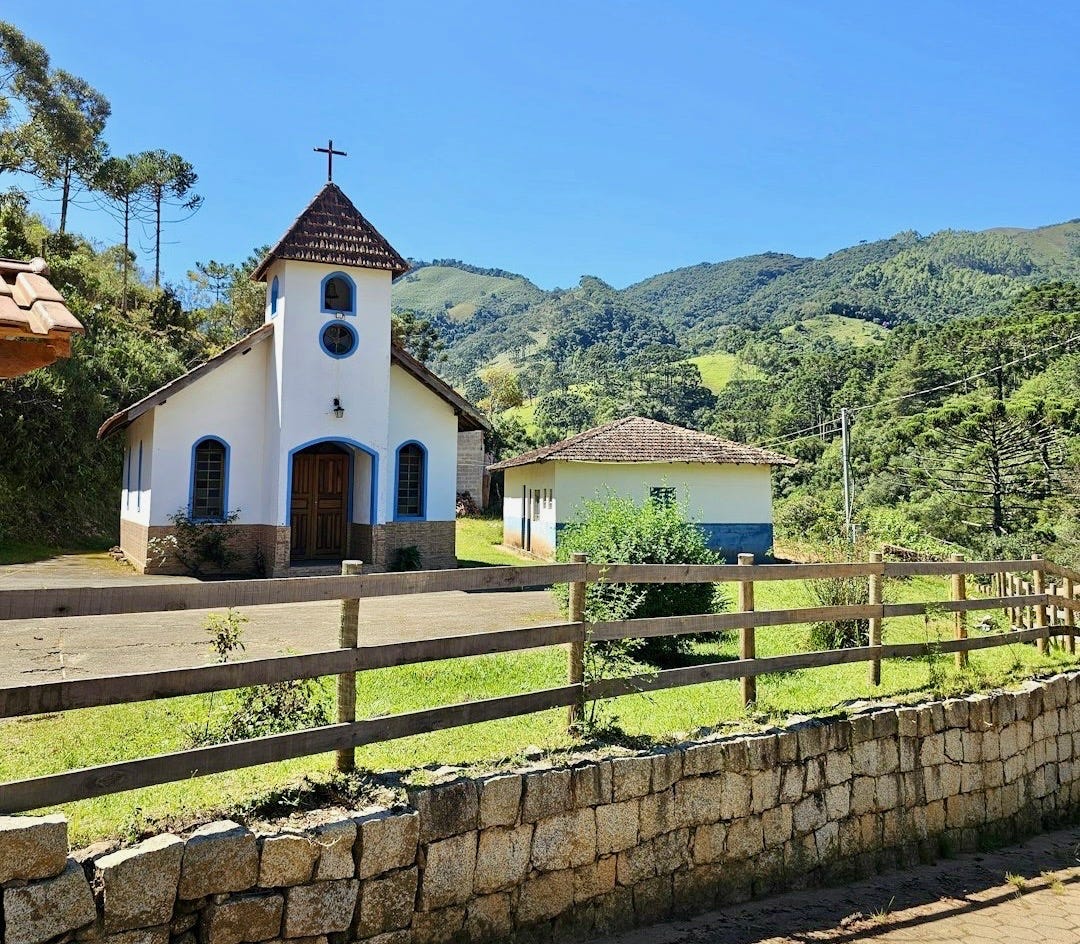
Camino Primitivo
Full Route: Start in Oviedo; 200 miles; 15 walking days
Short Route: Start in Lugo; 62 miles; 5 walking days
Next is the OG of caminos, the Primitivo, which starts in Asturias. It is mountainous and challenging, passing through remote forests and small villages, which is why only 4.9% opted for it. It is known as the original Camino because in the early 9th century, shortly after the remains of Saint James were said to be discovered in Galicia, King Alfonso II of Asturias did a pilgrimage from Oviedo to Santiago.
Camino del Norte
Full Route: Start in Irún; 512 miles; 37 walking days
Short Route: Start in Vilalba; 62 miles; 6 walking days
Only 4.6% of pilgrims take this camino, but those who do are rewarded with dramatic ocean views, beaches and rolling green hills. Not to mention both Basque and Asturian food and culture. Options for food and lodging are definitely more spaced out on this route and you can go long stretches without seeing other pilgrims, which was a stark contrast for us coming off the Francés. The beauty we saw on this route is hard to match however.
Via de la Plata
Full Route: Start in Seville; 620 miles; 45 walking days
Short Route: Start in Ourense; 62 miles; 6 walking days
The Silver Route, much of which is dry plateau and flat farmland, was walked by less than 2% of pilgrims last year. These pilgrims enjoy expansive landscapes, olive groves and even some Roman ruins. There can be long distances between services on this route. Our friends have done it in sections over a number of years because of its length.
All the Rest
The above are just the main ones. There are at least five or six others, including one that starts in Madrid, one that continues from Santiago to the Atlantic called Finisterre, one that starts in Cantabria, and one that follows the Ebro River. Most people do these after having done one of the main ones above.
What’s the Deal with the Hostels? Can I Stay in a Hotel?
The public hostels (albergues) you might have heard about or seen in movies are mainly dormitory-style and are first-come, first-served. Municipal ones are run by local governments and offer basic, affordable lodging without meals. Parochial albergues, run by churches, often work on a donation basis and may include shared meals or prayers. Association-run albergues are managed by volunteer groups and focus on community and pilgrim support. There is variability in cost (or suggested donation), but in general these are the cheapest and most basic lodging options you will find.
What many people don’t know is that many pilgrims actually stay in private hostels and hotels that can be reserved in advance. For them (us included), the security of knowing where they will be sleeping that night, or the quiet that comes from having their own room, outweighs the communal aspects of the albergues. Depending on which route you choose, you can get plenty of community during the day and use booking.com to book ahead to get your own room at night.
There are also ground operators that will book hotels for your entire route and transfer your luggage forward to each hotel. If you are looking for support and convenience, this is the way to go. There are many out there; a starting point would be Mac Adventures and Santiago Ways to get a feel for the costs.
We stayed at a number of pazos, which made the experience even more special and are worth a splurge. A pazo is a traditional Galician manor house—usually centuries old—converted into a rural guesthouse. Originally built for noble families, many have thick stone walls, grand sitting rooms, and lush gardens. Staying in one feels like stepping into Galicia’s elegant, rustic past. Our favorite one had a big pool and a gregarious owner from a noble family who was so down-to-earth that he mowed his own grounds even though he is a short line from Duke and his manor was built in 1620.
Would You Do It Again?
Absolutely! Walking puts you in the landscape, not just passing through it. You experience the weather, the terrain and the culture at a slower and more personal level, from the smell of the earth after rain to the sounds of mooing cows and church bells. Taking a little time to enjoy the towns and interact with people, including attending local yoga classes is incredibly rewarding. (See my post on doing yoga along the Camino)
You are part of a special club when you are walking the Camino. You meet people from all over the world, sharing steps and stories. Hearing “buen camino” from locals and fellow pilgrims fills your cup, makes you smile, and puts a spring in your step that propels you to Santiago.
Camino Route Distances and Walking Days
(Based on about 14 miles per day, but remember, do your own Camino.)





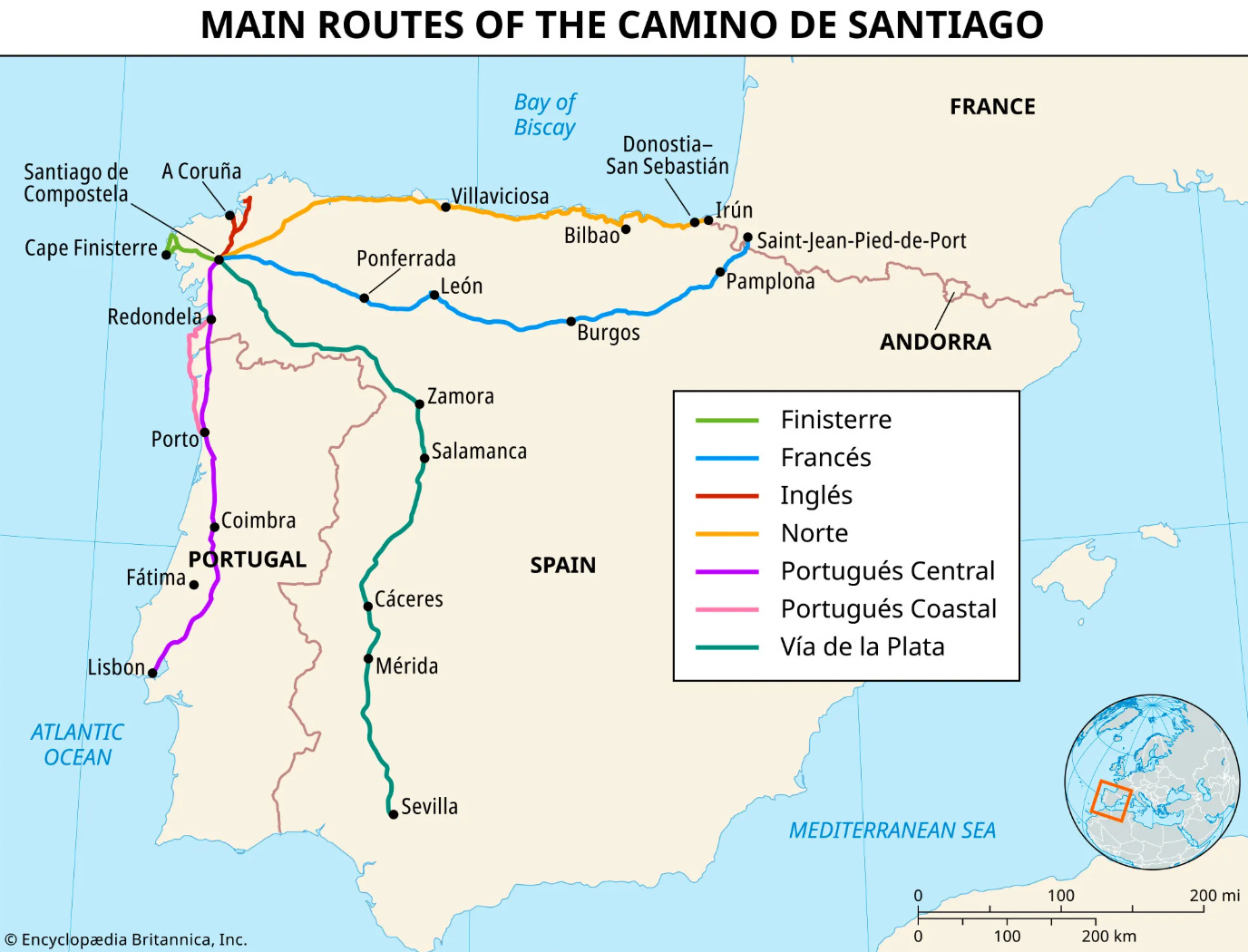
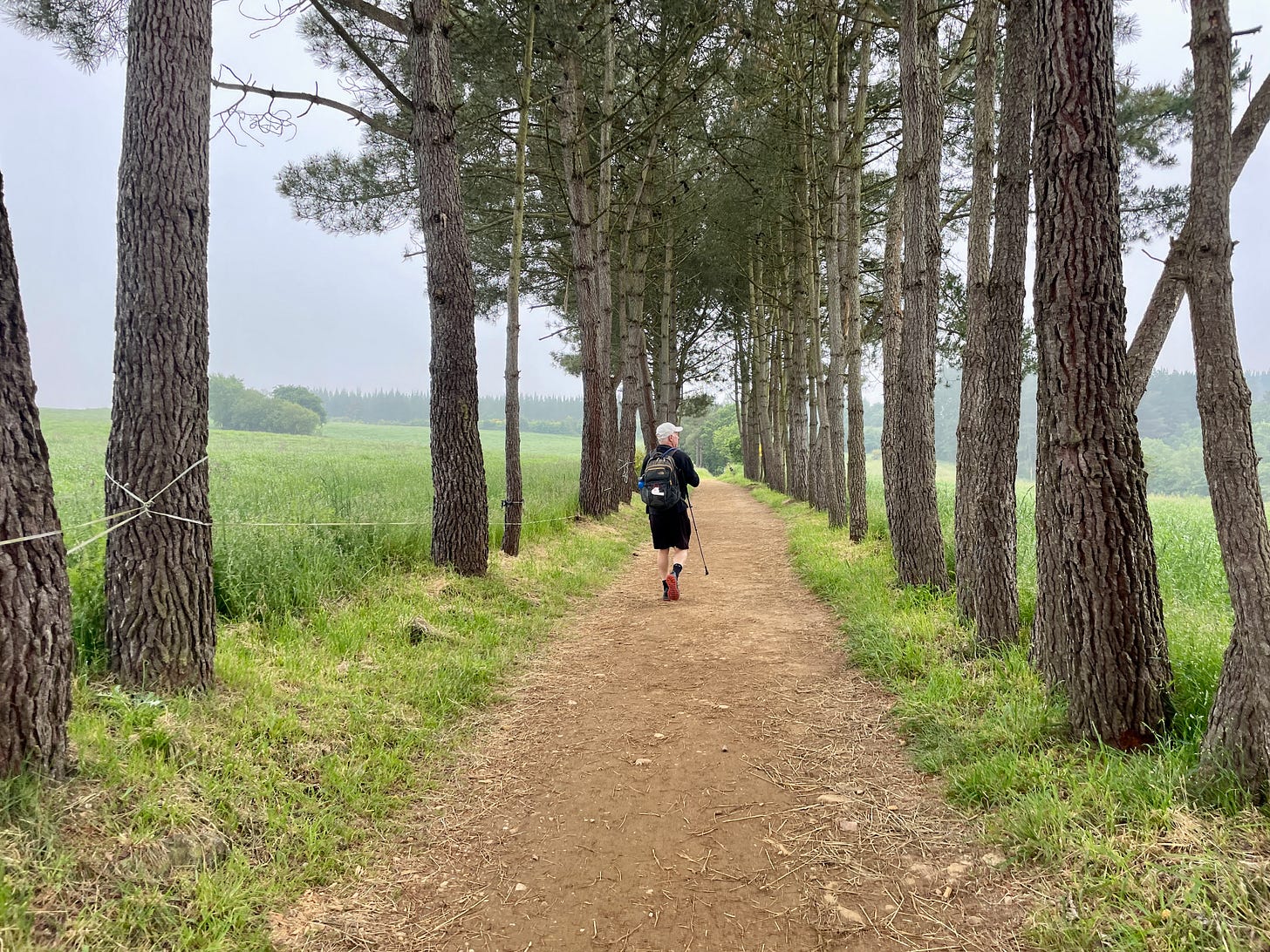

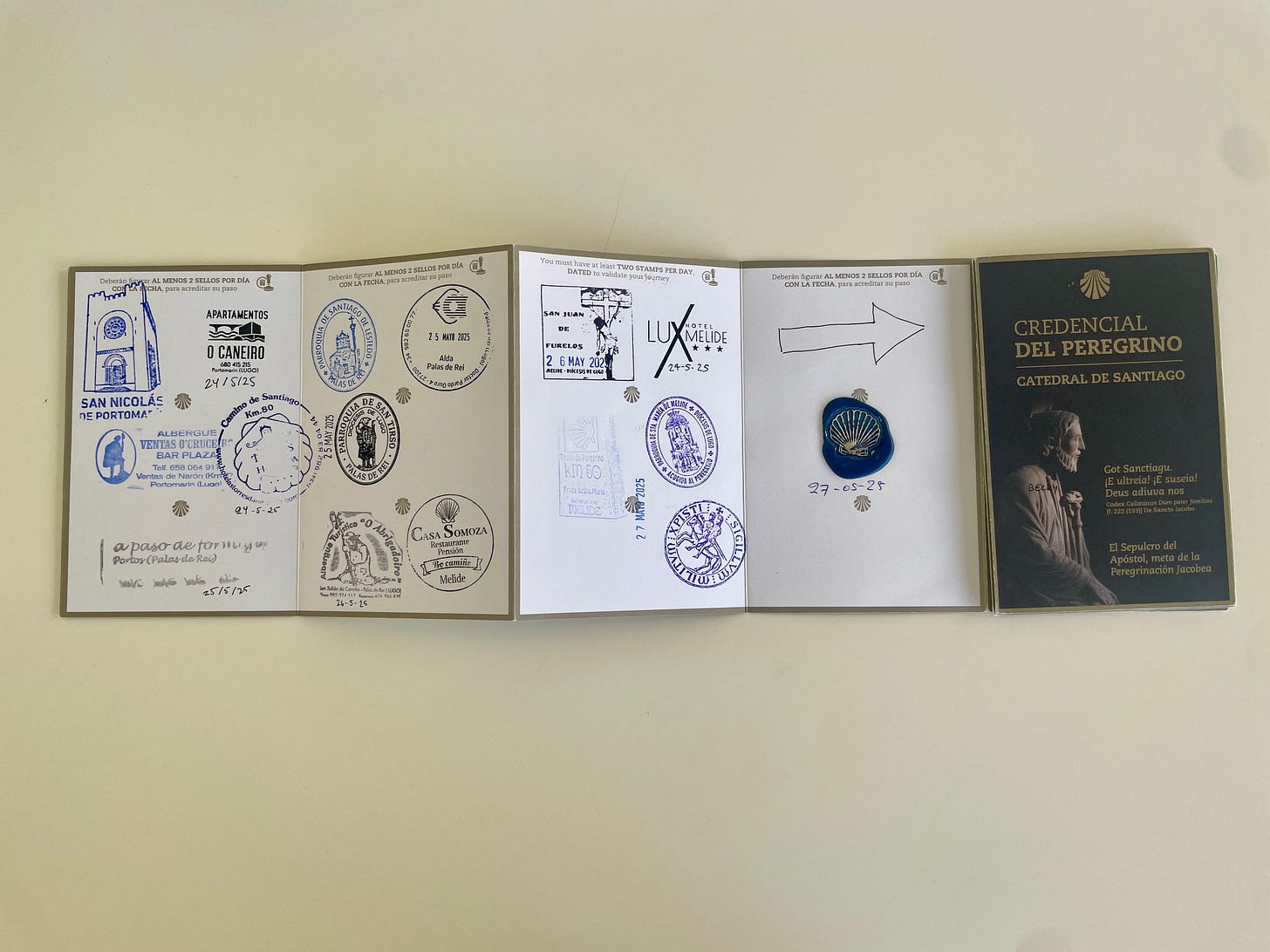
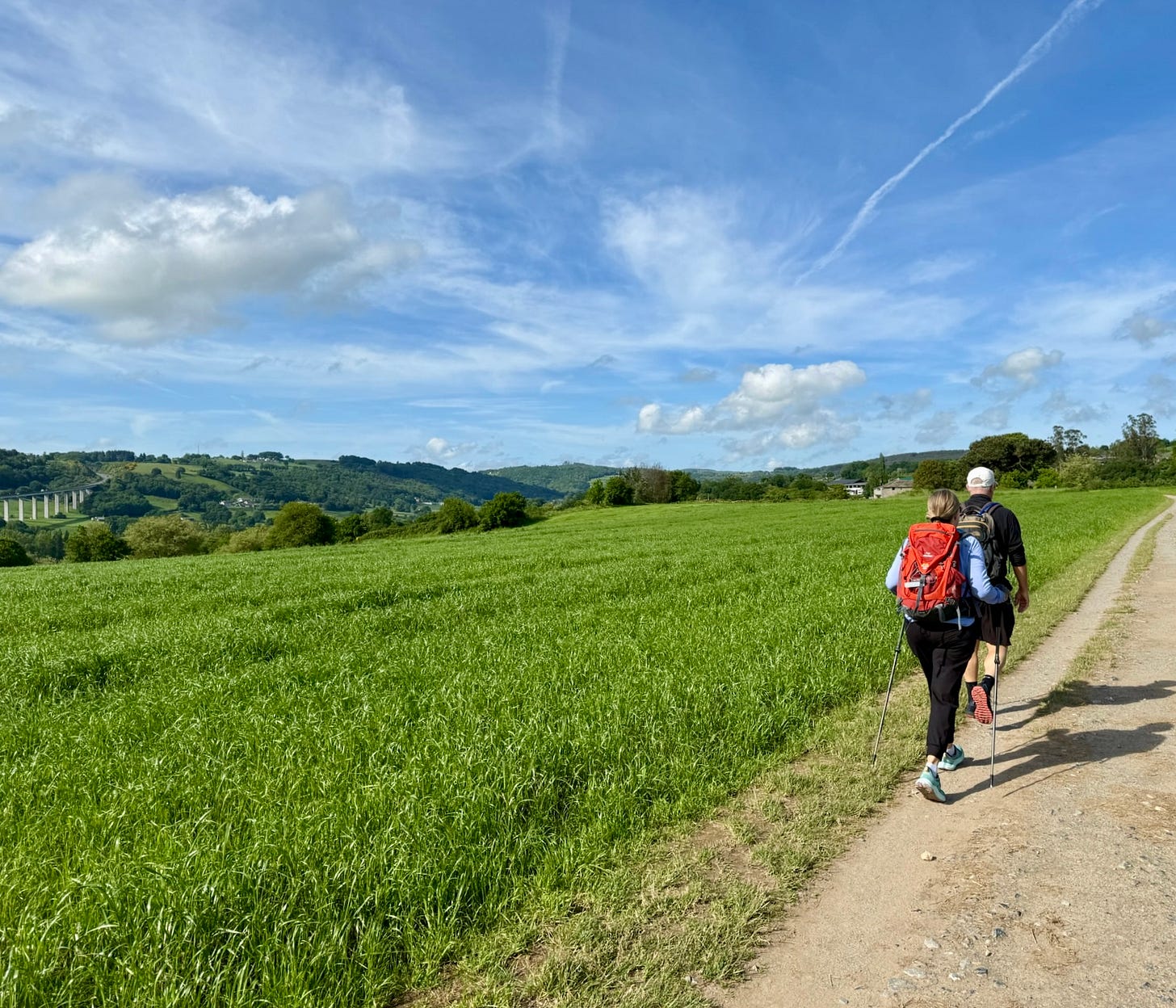

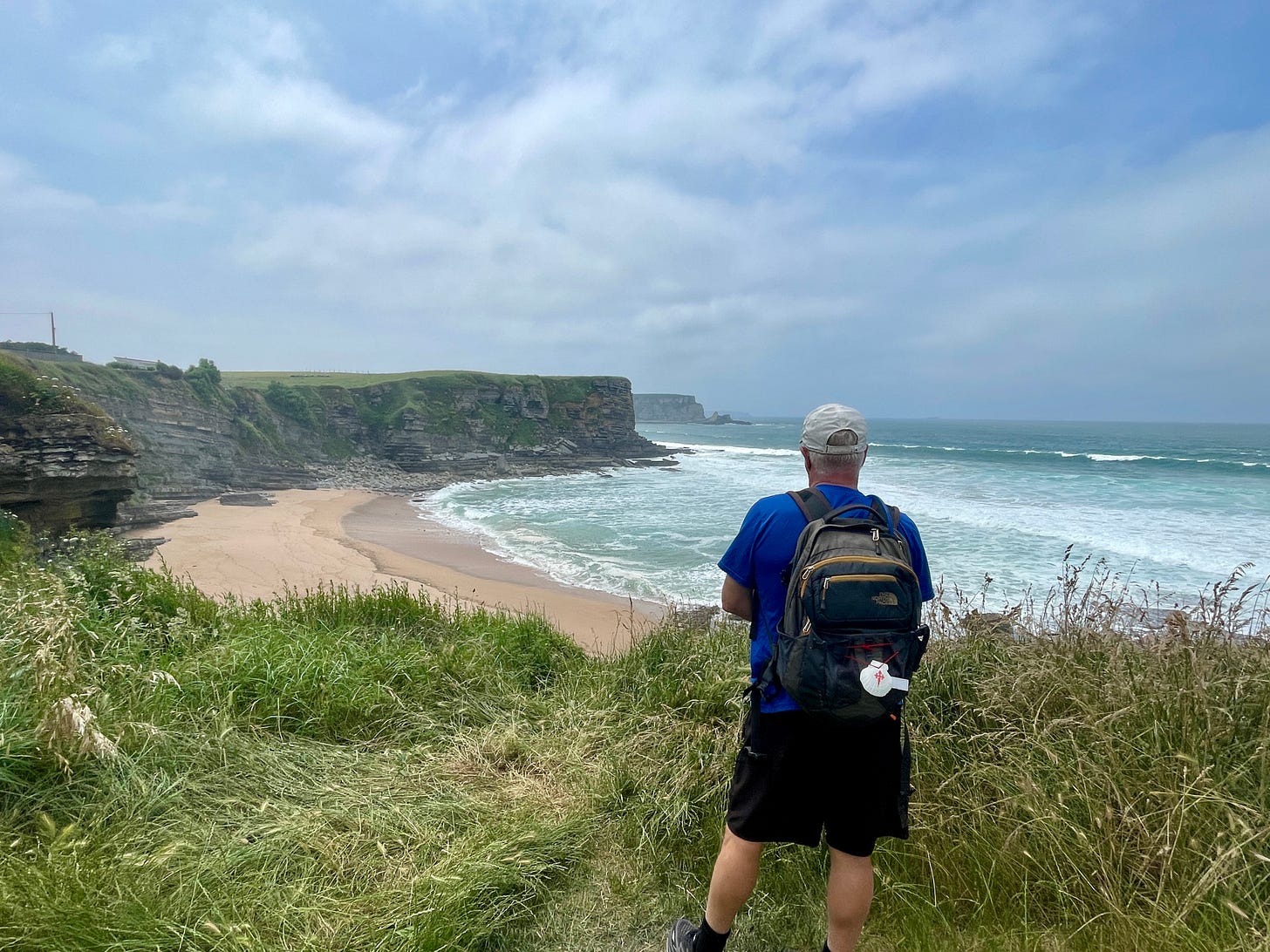
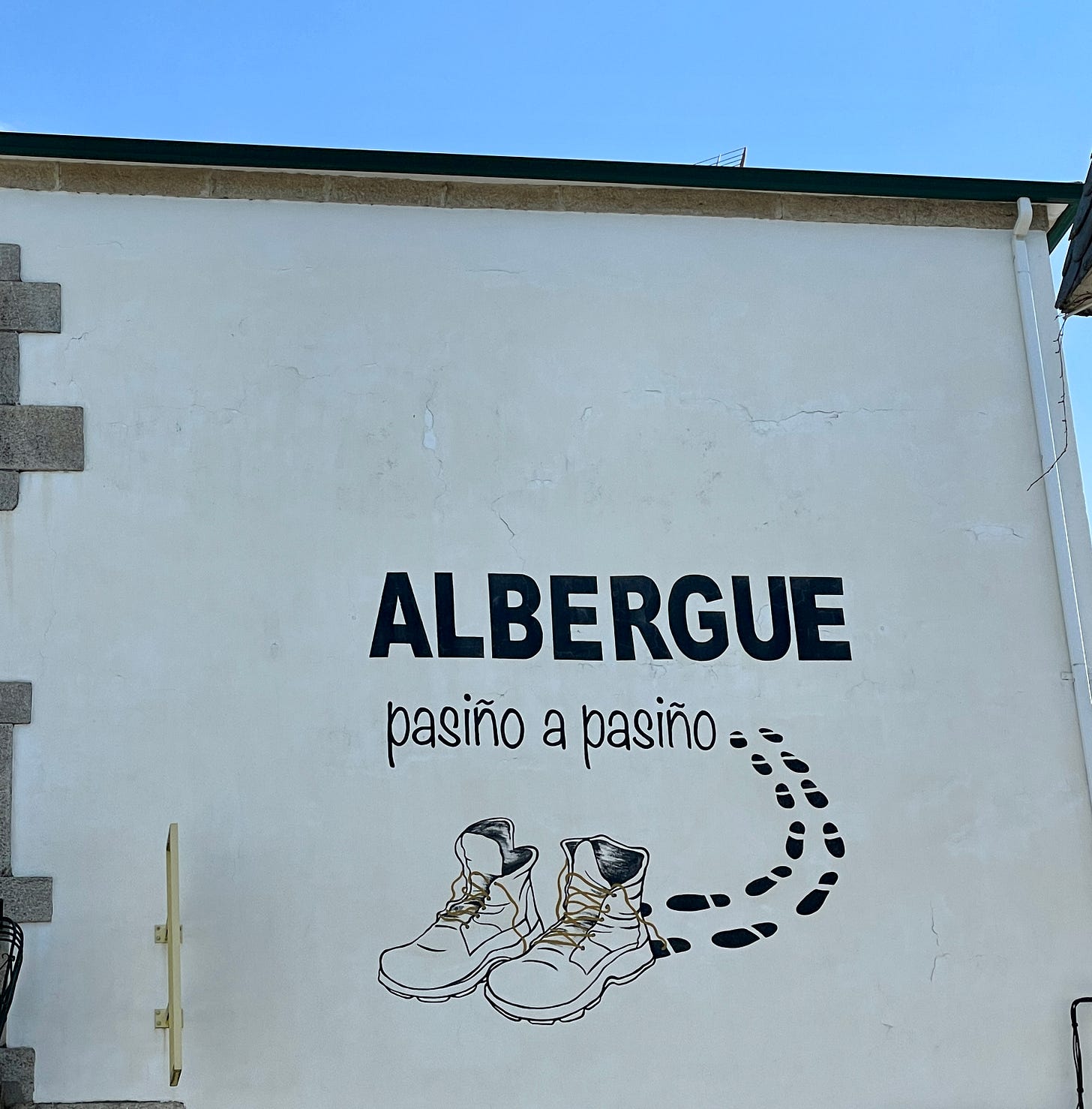
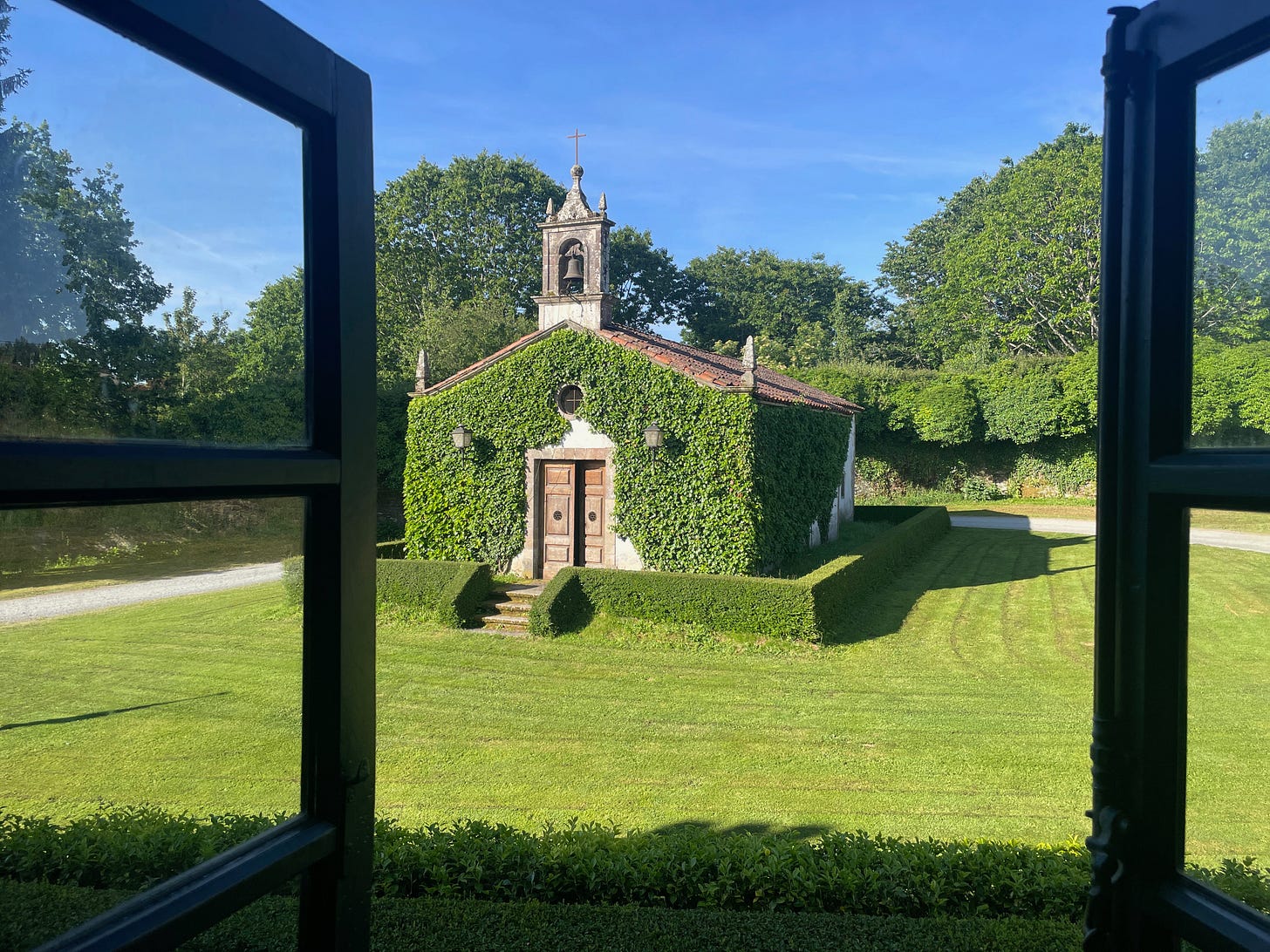
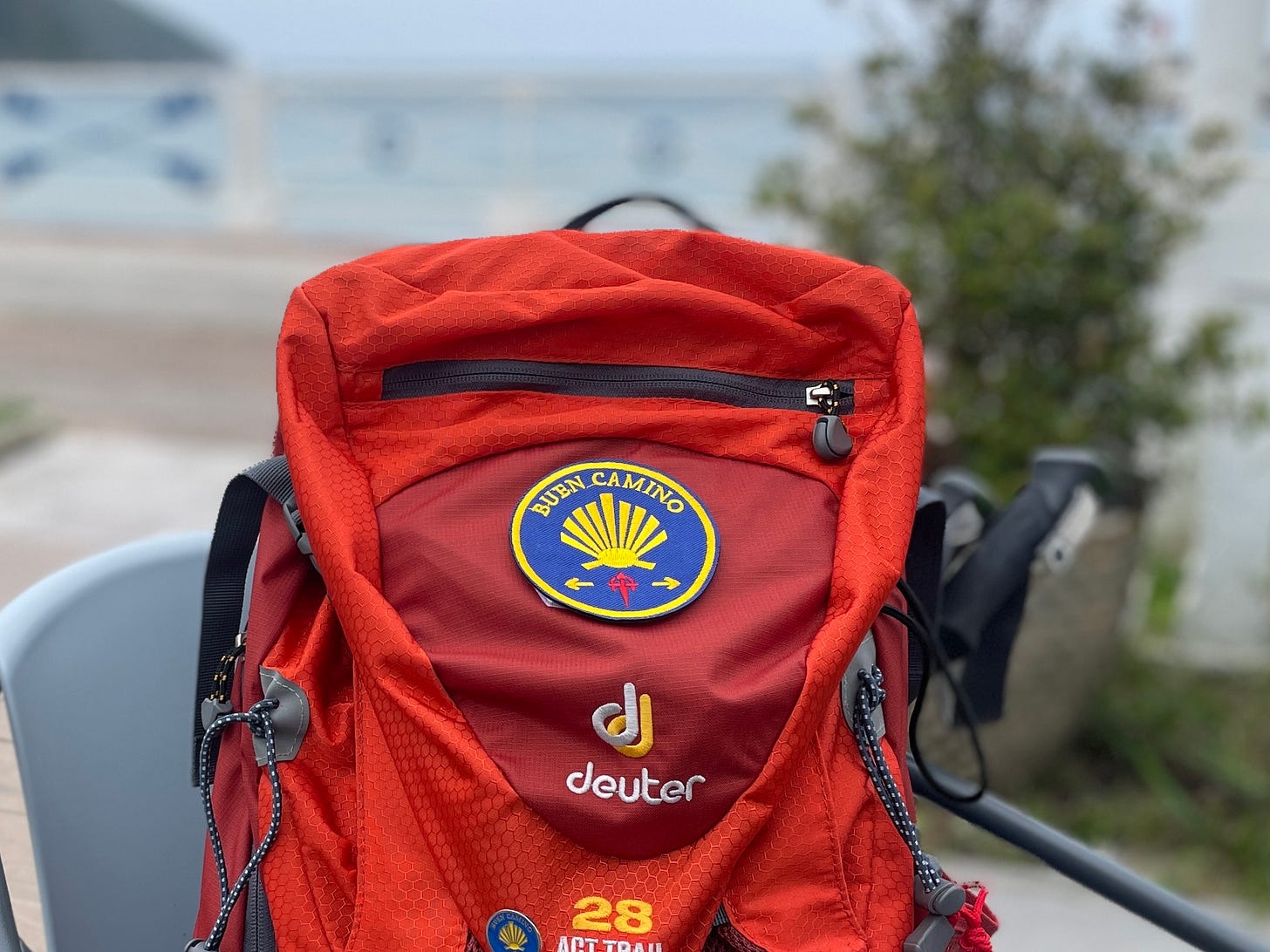


You can also do the Camino by bicycle. Totally counts. I have the stamp-loaded Pilgrim's Credential and certificate. When we registered for our Credential in 2017, they told us that a full 1/3 of all pilgrims finishing the Camino are cyclists.